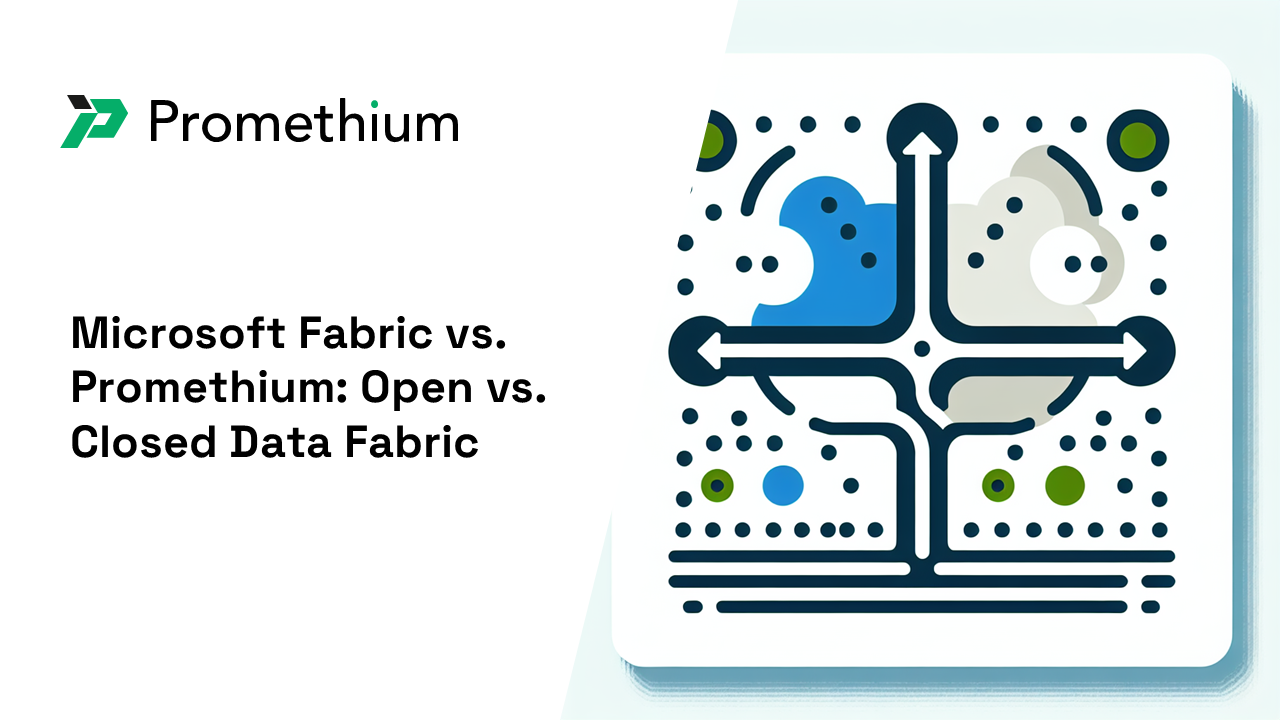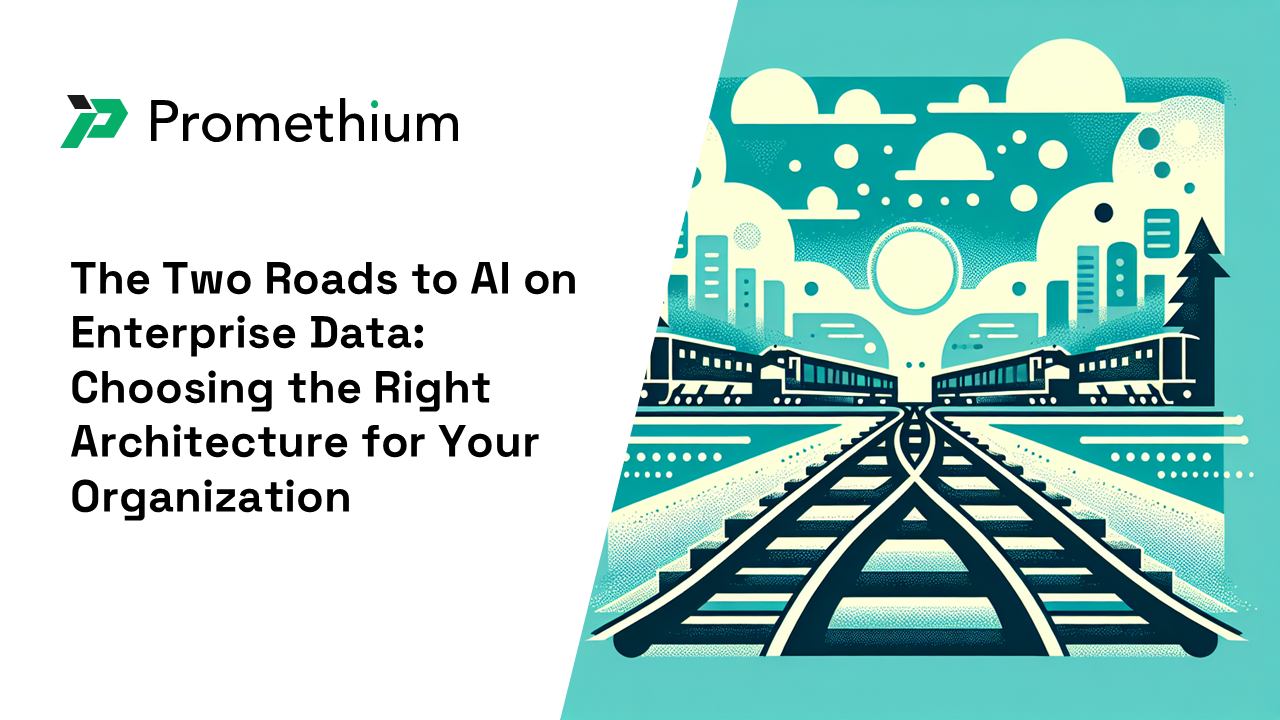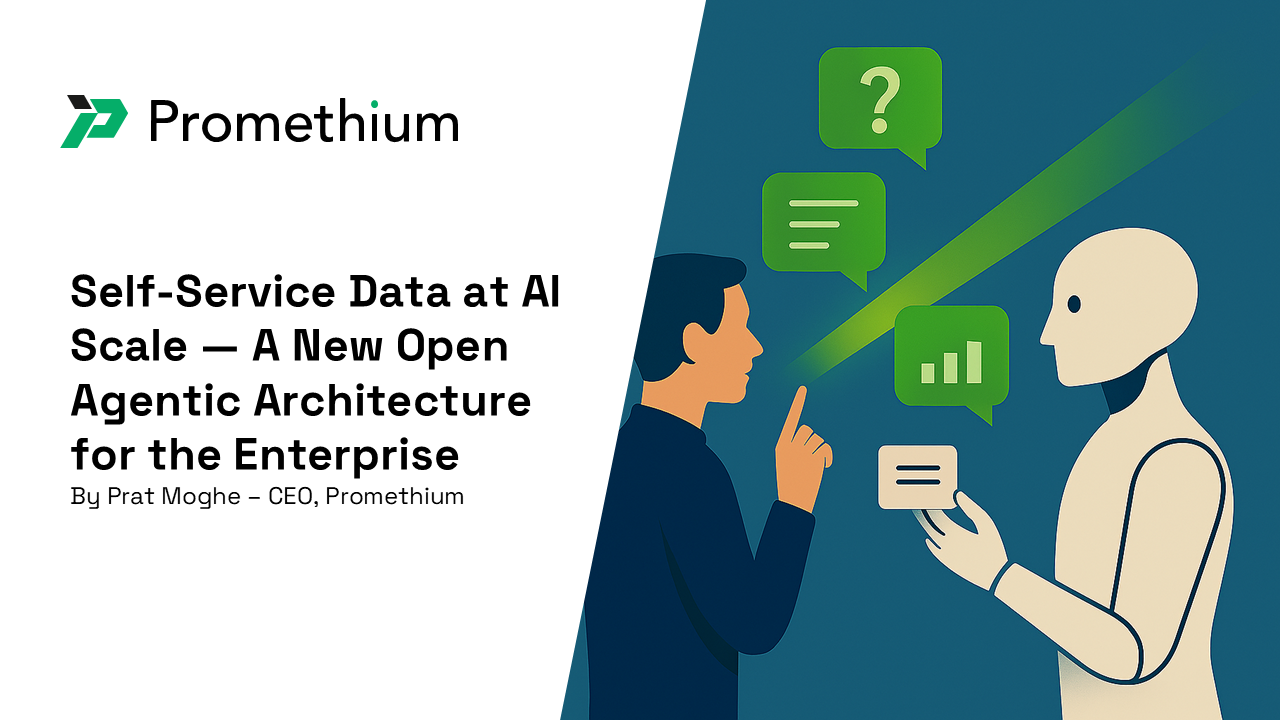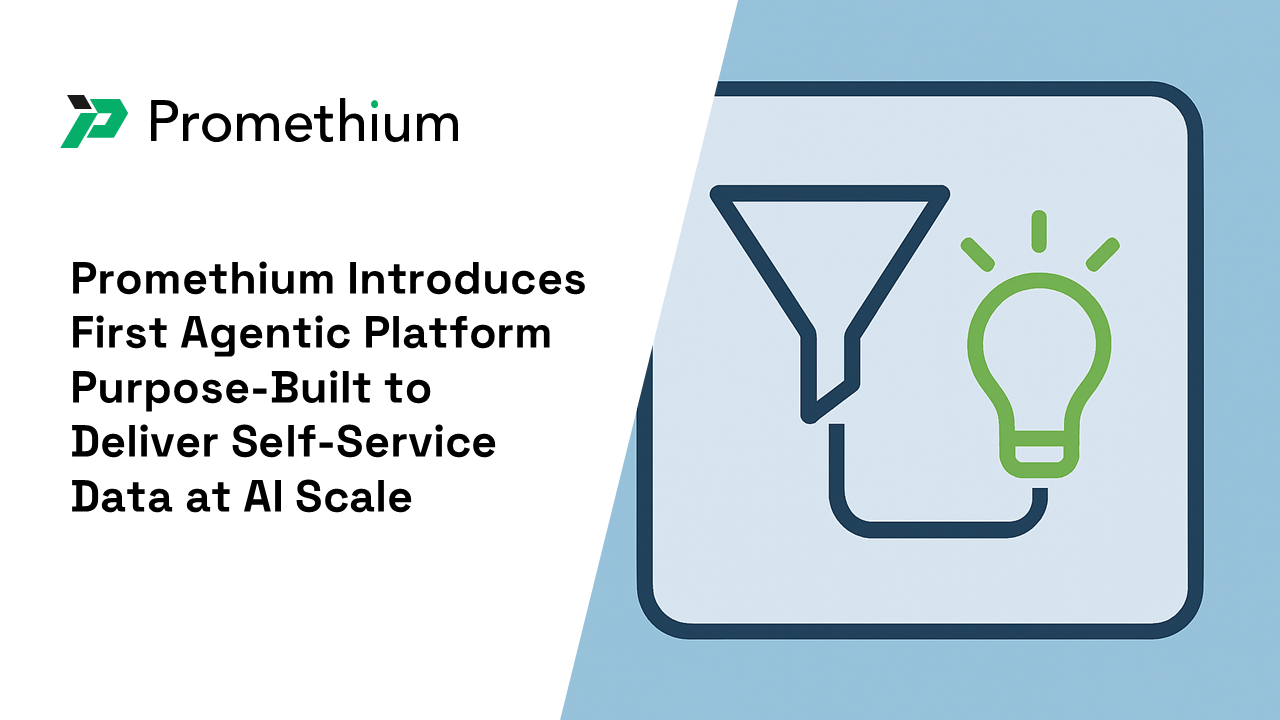AI is transforming how we work. What once felt impossible — asking a question in natural language and getting an answer in seconds — has quickly become table stakes. Enterprise leaders are racing to capture this same potential inside their organizations, deploying everything from conversational BI tools to autonomous AI systems. However, a recent study by MIT shows that 95% of AI enterprise pilots fail.
And here’s the problem: AI is only as good as the data architecture beneath it. For AI to work effectively, it needs real time access to contextualized, AI-ready data (read the complimentary research from Gartner on what that means here).
Two Philosophies, Two Futures
To solve this architecture crisis, two fundamentally different philosophies have emerged, all centered around the architectural concept of the data fabric:
Closed Data Fabric creates a comprehensive ecosystem that delivers everything you need — but requires you to rebuild your data foundation around a single vendor’s vision. The promise is simplicity through integration, but the reality is months of migration and platform dependency.
Open Data Fabric integrates with what you’re already using, maximizing existing investments while adding AI-native capabilities. The promise is enhancement without disruption, preserving strategic flexibility while enabling immediate AI capabilities.
These aren’t just different products — they’re different approaches to how enterprises should handle data in the AI era.
Symptomatic of the Closed Approach: Microsoft Fabric
Microsoft Fabric represents the closed philosophy at its most comprehensive. It offers deep integration across Azure services — Synapse, Power BI, Data Factory, and Purview — all unified around OneLake, their centralized storage layer built on Delta-Parquet format.
The closed approach delivers:
- Seamless integration within Microsoft’s ecosystem
- Unified governance through Purview
- Optimized performance when everything runs on Azure
But it requires:
- Migrating all data to OneLake for full functionality
- Standardizing on Microsoft’s entire data and analytics stack
- Accepting vendor lock-in and platform dependency
Symptomatic of the Open Approach: Promethium
Promethium represents the open philosophy. Instead of centralizing data, it brings intelligence to data where it already lives through agents that orchestrate access, context, and insights in real-time.
The open approach enables:
- Zero-copy access across any data source — cloud, on-premise, SaaS
- AI-native architecture supporting human-AI collaboration
- Complete vendor independence and tool choice
While preserving:
- Your existing data investments (Snowflake, Oracle, Databricks, etc.)
- Your current BI tools (Tableau, Looker, Power BI)
- Your strategic flexibility for future technology choices
What It Takes to Solve the AI Data Challenge
Based on the architecture crisis we outlined above — agents needing real-time, contextual access across distributed enterprise data — any effective solution must deliver on three foundational capabilities:
1. Universal Access: Connect Everything, Move Nothing
The reality: Enterprise data doesn’t live in one place, and it can’t. Regulatory requirements keep some data on-premise. Performance needs keep analytics data in specialized warehouses. Business applications generate data in their own formats. The AI era hasn’t simplified this — but it’s made instant access across all sources essential.
The requirement: Query data where it lives, not force everything into a single repository. This eliminates migration risks, preserves performance optimizations, and respects data residency requirements while enabling immediate cross-platform analysis.
| Capability | Microsoft Fabric | Promethium |
| Data Movement | Required to OneLake for full functionality | Zero-copy federation from any source (cloud, on-prem, SaaS) |
| Multi-cloud Support | Azure only | AWS, Azure, GCP |
| Time to First Query | Months (post-migration) | Days |
| Legacy System Integration | Complex via gateways | Direct connectivity |
2. Contextual Intelligence: Understand What Data Means, Not Just Where It Lives
The second reality: Raw data access isn’t enough. A “customer” field in Salesforce means something different from “customer” in your billing system. AI agents and business users need to understand these distinctions automatically, not through months of manual semantic modeling.
The requirement: Automatically discover relationships, apply business definitions, and provide complete lineage — even for questions no one has asked before. This is what transforms data access into trusted insights.
| Capability | Microsoft Fabric | Promethium |
| Metadata Discovery | Manual modeling in Purview | Automated 360° Context Engine |
| Business Context | Pre-defined semantic models | Dynamic context generation from across your data estate (incl. data catalogs, semantic layers, query history,…) |
| Data Lineage | OneLake data only | Cross-platform, complete lineage |
| Explainability | Dashboard-dependent | Built into every query (lineage, natural language explanation, SQL code) |
3. Human-AI Collaboration: Enable Teams and Agents to Work Together
The reality: The future of data isn’t human-only or AI-only — it’s collaborative. Business users need natural language interfaces. Data scientists need programmatic APIs. AI agents need structured access for autonomous workflows. Marketing departments need to share insights with finance teams who work differently.
The requirement: Support how different users and systems naturally work, not force everyone into the same interface or workflow. Enable reusable insights that teams can build upon and agents can learn from.
| Capability | Microsoft Fabric | Promethium |
| User Interfaces | Power BI dashboards + Copilot | Natural language + any tool + APIs |
| AI Integration | Copilot only | Full agentic architecture |
| Cross-Team Sharing | Power BI workspace dependent | Data Answer Marketplace |
| Agent Support | Limited to Microsoft ecosystem | Native multi-agent orchestration, MCP and A2A support |
| Memory and Learning | Static models | Adaptive memory that improves over time |
The Choice That Defines Your AI Future
Your choice between open and closed data fabric architecture will determine:
- Speed to AI value: Weeks vs. months before seeing results
- Strategic flexibility: Vendor independence vs. platform dependency
- Investment preservation: Enhancement vs. rebuilding everything
- Collaboration effectiveness: Cross-tool workflows vs. single-vendor constraints
Microsoft Fabric works well for organizations willing to rebuild their entire data stack around Microsoft’s ecosystem. But for enterprises that need immediate AI capabilities across existing infrastructure while preserving future flexibility, the architectural choice is clear.
The question isn’t whether you need data fabric — it’s which philosophy enables the future you’re building toward. In our next post, we’ll examine the hidden costs of closed architectures and why the “simple” migration to OneLake often becomes more complex and expensive than expected.
Your data architecture choice today determines your AI capabilities tomorrow.
Ready to see how the Open Data Fabric works? Get a demo to see how it can work on your data.




